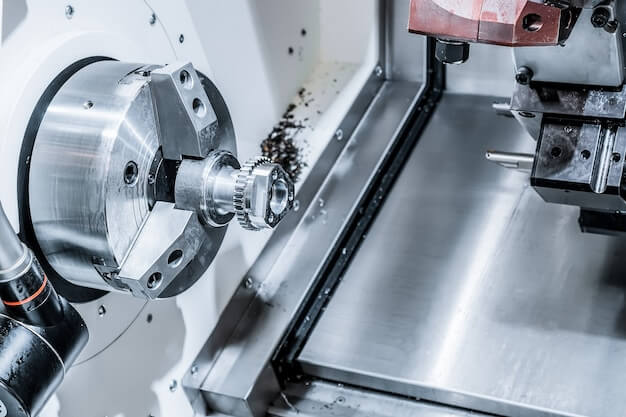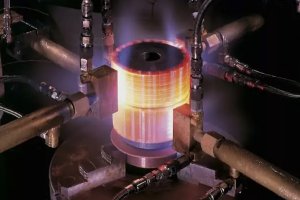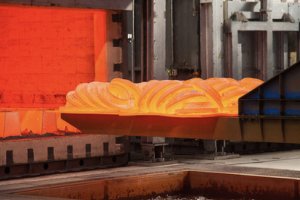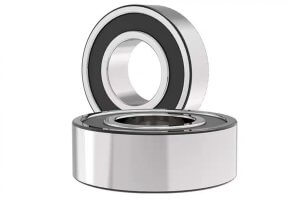Introduction to CNC Machined Components
CNC machined components are parts produced using Computer Numerical Control (CNC) machines, which operate via digitally-encoded coordinates. These automated devices offer high precision and speedy execution, making them essential in numerous industries such as automotive, medical, telecommunication, aerospace and more. Emphasizing the importance of optimizing optical clarity, particularly when working with materials like Polymethyl Methacrylate (PMMA) or Polycarbonate (PC), can deliver impeccably clear and durable components. This characteristic is crucial for specific applications that necessitate a level of transparency, such as lenses in optical instruments or transparent enclosures.
Understanding Optical Clarity in CNC Machined Components
The concept of optical clarity refers to the level at which light is able to pass through a material without being significantly distorted or absorbed. In manufacturing Computer Numerical Control (CNC) components, achieving high levels of optical clarity hinges on the careful selection and manipulation of materials such as PMMA (PolyMethyl MethAcrylate) and PC (Polycarbonate). The significance of this attribute can’t be overemphasized because it directly affects not just the aesthetic value but also the overall performance of the finalized product.
- Explanation of Optical Clarity: Essentially, optical clarity indicates how transparent a particular material is. It’s measured based on the amount of light refracted, reflected, or absorbed by the material under consideration. A material with perfect optical clarity will allow 100% light transmission with virtually zero hindrance.
- Role and Significance in Manufacturing CNC Components: Achieving optimal optical clarity is crucial in industries such as aviation, electronics, automobiles etc., where manufacturers need to produce clear parts like window panels, lenses, display covers. High-quality parts enable clear vision for end users, enhance safety measures, and improve the equipment efficiency.
Materials like PMMA and PC are often used due to their impressive strength-to-weight ratio and exceptional transparency. By understanding and optimizing these properties, manufacturers can create CNC machined components that don’t just look good, but perform exceptionally well too.
Exploring PMMA Material
Poly(methyl methacrylate) (PMMA), or more commonly known as acrylic glass, is a translucent thermoplastic material often used for its optical clarity in CNC machined components. Optically transparent and robust, PMMA provides excellent light transmission characteristics that can rival glass while providing the added benefits of being shatter-resistant. Therefore, it plays an influential role in ensuring the optimal functioning and clear visibility in various applications.
An example situation where the unique properties of PMMA are beneficial can be found in automotive industries. The material’s exceptional resistance to weathering and UV radiation makes it ideal for use in car windows, headlights and taillights—elements directly exposed to harsh external conditions.
Optical Clarity and Polycarbonate (PC) Material in CNC Machining
When it comes to optimizing optical clarity in CNC machined components, the choice of material plays a crucial role. Let’s compare PMMA and PC materials:
1. PMMA (Acrylic) Material:
- PMMA, also known as acrylic, offers excellent optical clarity, making it a popular choice for applications that require see-through surfaces.
- With good rigidity and durability, PMMA can serve as a substitute for glass in various CNC machining projects.
- It is commonly used in lenses, transparent enclosures, food storage containers, and decorative items.
2. PC (Polycarbonate) Material:
- Polycarbonate is another material known for its optical clarity and transparency.
- It offers high heat resistance, making it suitable for applications that require clarity and can withstand high temperatures.
- PC is commonly used in safety glasses, face shields, automotive parts, electronic components, and medical devices.
Both PMMA and PC materials provide optical clarity in CNC machined components. The choice between the two depends on specific project requirements, such as temperature resistance and application needs. To access professional CNC machining services and expert advice on material selection, you can rely on our online CNC service.
Comparing PMMA and PC in Optimizing Optical Clarity
The optimization of optical clarity in CNC machined components greatly relies on the material used, making a side-by-side comparison between polymethyl methacrylate (PMMA) and polycarbonate (PC) significant. Both materials have their specific properties that influence their effect on optical clarity.
- PMMA, primarily known for its exceptional transparency, offers a light transmission rate comparable to glass yet is more impact resistant, making it ideal when high-optical quality is integral to the product specification.
- Conversely, even though PC transmits less light due to its higher refractive index, it boasts superior toughness and can endure extreme temperatures – key qualities chosen when durability matters more than optimum clarity.
Selecting either PMMA or PC depends largely on distinct requirements: if maximized clarity is valued over other attributes, PMMA would be the top choice; but if the application demands a balance between reasonable transparency and robustness, PC becomes the stronger candidate.
Connection with User Concerns: Choosing Materials for Optimal Optical Clarity
Selecting the appropriate material to optimize optical clarity in CNC machined components can be a daunting task, especially for beginners. The choice often boils down to Polymethyl Methacrylate (PMMA) and Polycarbonate (PC). PMMA is celebrated for its superior clarity and resistance to UV rays, while PC boasts excellent impact resistance and heat stability.
Potential issues a beginner might encounter include prioritizing one property over another based on project requirements. For example, choosing PMMA for durability when your project requires higher heat resistance could lead to potential damage or malfunction of the machine part.
- Guidelines: Understand your project’s specific needs before making a selection. List out priority features and match these to what each material offers.
- Advice: Start by experimenting with smaller, less costly projects. This provides practical experience and better understanding of the materials’ limits and advantages.
Other Articles You Might Enjoy
- CNC Machining of Composite Materials: Challenges and Opportunities?
Introduction to CNC Machining and Composite Materials CNC, or Computer Numerical Control machining refers to a manufacturing process where pre-programmed computer software dictates the movement of factory machinery and tools.…
- The Role of Precision in CNC Machining: How Tight Tolerances Impact Cost and Quality?
Introduction: Understanding Precision in CNC Machining In manufacturing contexts, precision is epitomized by Computer Numerical Control (CNC) machining. In essence, CNC machining is a process utilized widely within the manufacturing…
- 5 Essential Components of a CNC Lathe
CNC lathe is a machine tool widely used in the field of machining of custom parts. It utilizes computerized controls to automate and precisely control various machining operations. CNC lathes are widely used…









